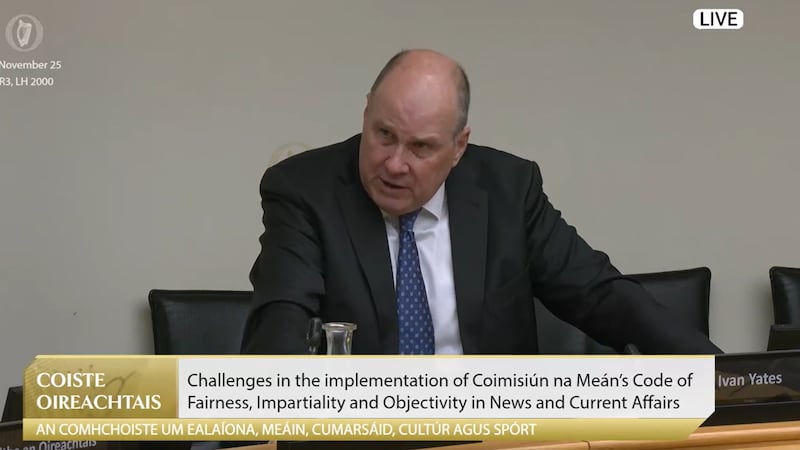When the Irish Fiscal Advisory Council accused the Government recently of “fiscal gimmickry” there were gasps at the use of such indecorous language. The council pointed to Covid-era funding to areas such as health that now appeared permanently baked into annual spending, along with other so-called temporary measures that showed no sign of ending. It could have pointed the finger at another example, albeit one that is justified and, in a circuitous way, is delivering on a political promise made several years ago by the current Taoiseach. That example is the Arts Council.
This week Kevin Rafter departs the council after four years as its chairman. The former journalist, a senior academic at Dublin City University, is leaving before the end of his term to take up a position at Boston College. Over the course of an eventful tenure, he has had to contend with a change of government, oversee the appointment of a new director and deal with an unprecedented emergency in the form of successive shutdowns of every live-performance venue, cinema and art gallery in the country. Amid all of this, the council has seemed to run relatively smoothly, maintaining good relations with Minister for Arts Catherine Martin and with its clients generally (spats with the Abbey Theatre and Listowel Writers’ Week notwithstanding).
But the blunt reality is that what those in Rafter’s position are judged more than anything else by is how much money they delivered to their constituency. By that crude measure he is the most successful chairman of the council since its establishment as Ireland’s statutory funding body for the arts, in 1951.
During his 2017 campaign for the Fine Gael leadership, Leo Varadkar committed to doubling funding for arts, culture and sport over the next seven years. But Varadkar’s first budget as taoiseach delivered a paltry €3 million extra
He leaves behind an organisation with a budget of €134 million for 2024. When he joined, in 2019, the figure was €75 million. That’s an increase of almost 80 per cent, unheard of for most State bodies. The pivotal moment came with the first lockdown in 2020 and the shutdown of nearly all cultural activity. After emergency financial supports were introduced, Martin, then new to her post, opened the door to a dramatic scaling up of arts funding in the years that followed.
Seán Moncrieff: Visiting from France, my daughter found Ireland hard to love
Donal Skehan on making a family home in Sutton: ‘I love things that have a story attached’
Give me a quiet quitter over a loud worker any day - there’s nothing worse
Beyond curry sauce and chicken balls: Chinese food in Dublin is at the top of its game
In a way, though, Martin was only fulfilling a promise made by a fellow minister a few years previously.
During his 2017 campaign for the Fine Gael leadership, Leo Varadkar committed to doubling funding for arts, culture and sport over the next seven years. The Arts Council allocation that year, having been slashed during the postcrash years, stood at €65 million. It seemed reasonable to conclude that the council, as the primary channel for supporting actual art by actual artists, could expect a pro-rata increase.
But Varadkar’s first budget as taoiseach delivered a paltry €3 million extra. If it continued at that annual rate, a back-of-the-envelope calculation at the time was that it would take 20 years rather than seven to hit a target that, by most calculations, was the minimum required to bring Ireland close to parity with European norms. In an unusually strong statement at the time, Rafter’s predecessor, chairwoman Sheila Pratschke, described that budget as a “deep disappointment”.
Things picked up a little with increases to €75 million in 2019 and €80 million in 2020. But the idea of reaching €130 million by 2024 still looked fanciful.
The history of the State’s engagement with culture is characterised by repeated failures to deliver on rhetorical commitments. If it took a crisis to create an opportunity, so be it
Then came Covid and an emergency supplementary allocation of €20 million to the 2020 budget to assist the many artists who saw their incomes disappear in the early months of the pandemic. That was followed by a series of active engagements through the Government’s Arts and Culture Recovery Taskforce with representative organisations such as the National Campaign for the Arts. The outcome, along with other initiatives such as the Basic Income for Artists pilot scheme, was a stonking rise to €130 million in the 2021 allocation, which was repeated in the years that followed and slightly increased for 2024.
Varadkar’s promise – or at least the Arts Council part of it – had been met three years ahead of schedule. In theory the money was a temporary response to a national emergency. At the time Martin said it was to help “artists, arts workers and arts organisations come through this crisis and play their part in the national recovery”. Either the national recovery still has some way to go or the emergency funding has become permanent. In other words, fiscal gimmickry.
Nobody appears to be embarrassed by this sleight of hand, and nor should they be. The history of the State’s engagement with culture is characterised by repeated failures to deliver on rhetorical commitments. If it took a crisis to create an opportunity, so be it. That appears to be the Irish way of getting things done.
















